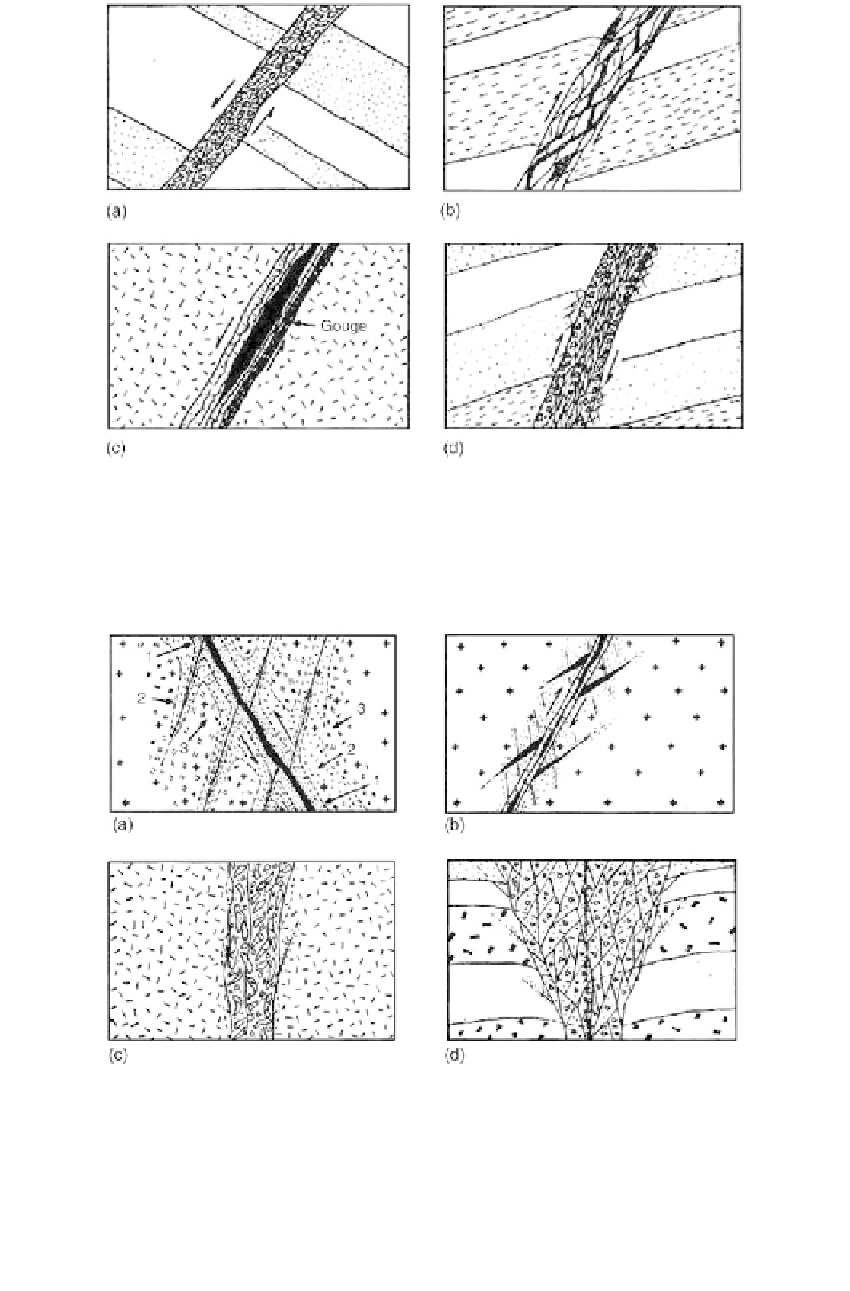Environmental Engineering Reference
In-Depth Information
FIGURE 6.56
Various kinds of fault fillings: (a) fault breccia; (b) braided fault with intersecting seams of gouge; (c) vein in an
igneous rock with a gouge layer adjacent to foot wall; (d) gouge which has rotated and forced larger angular
fragments toward walls of fault because of movement concentrated in the center of the fault. (From Wahlstrom,
E. C.,
Tunneling in Rock
, Elsevier, New York, 1973.)
FIGURE 6.57
Some effects of circulation of hydrothermal solutions along faults. (a) A metalliferous vein (black) is
accompanied by zoned alteration in igneous wall rocks: a zone of silicification and sericitization, near the vein
and subsidiary fractures (1), grades outward into a zone of kaolinized feldspars (2), and finally into a zone of
alteration containing mixed-layer illite-montomorillonite (3). (b) Fault and adjacent gash fractures are filled
with minerals deposited from solution. Argillic alteration permeates wall rocks (stippling). (c) A corrosive
hydrothermal fluid enlarges opening along a fault by solution of the wall rocks. Walls collapse into opening to
form a slap breccia. (d) Corrosive hydrothermal solution dissolves wall rock along a fault and its subsidiary
fractures to produce a collapse breccia. This phenomenon is sometimes described as solution stoping. (From
Wahlstrom, E. C. ,
Tunneling in Rock,
Elsevier, New York, 1973.)


